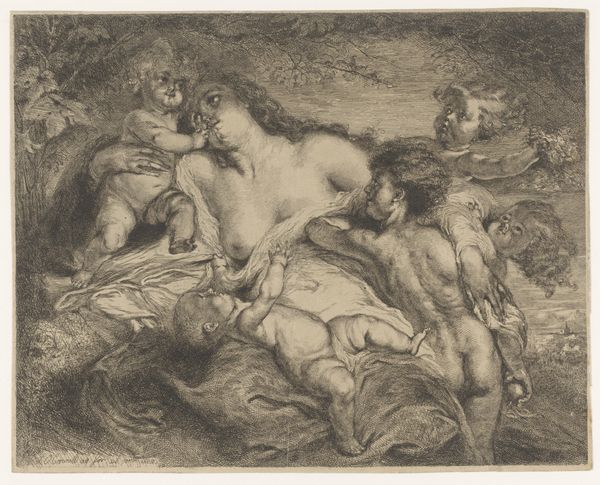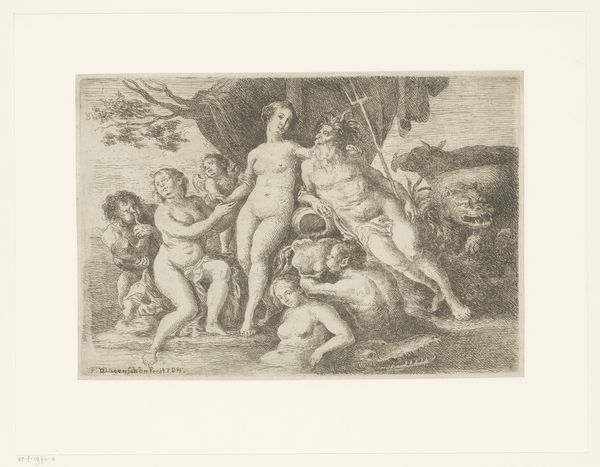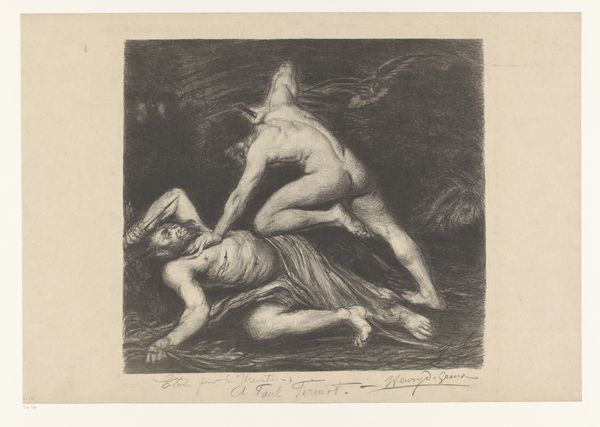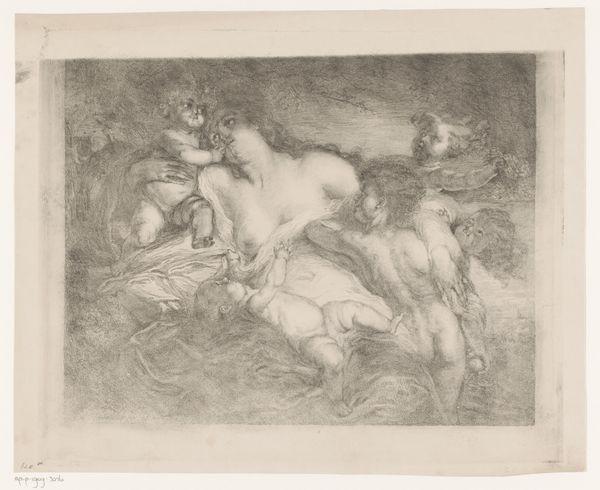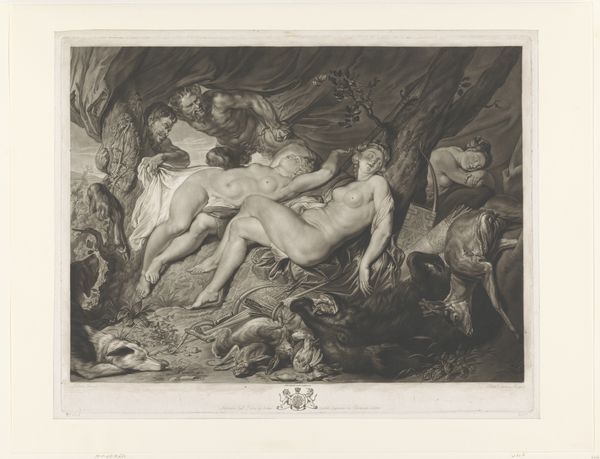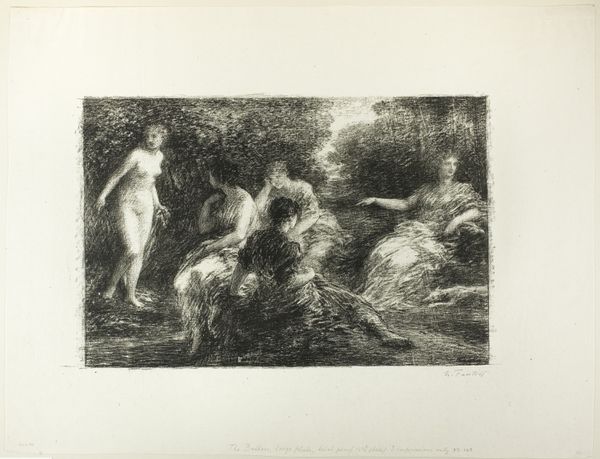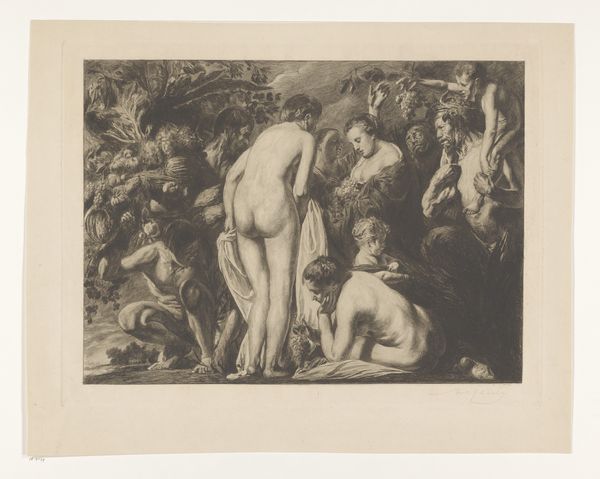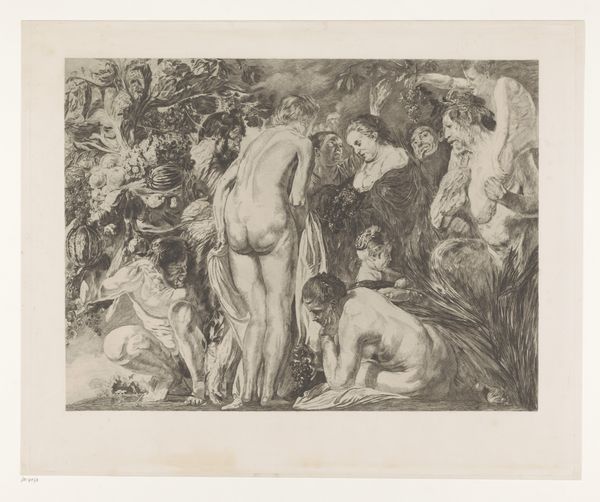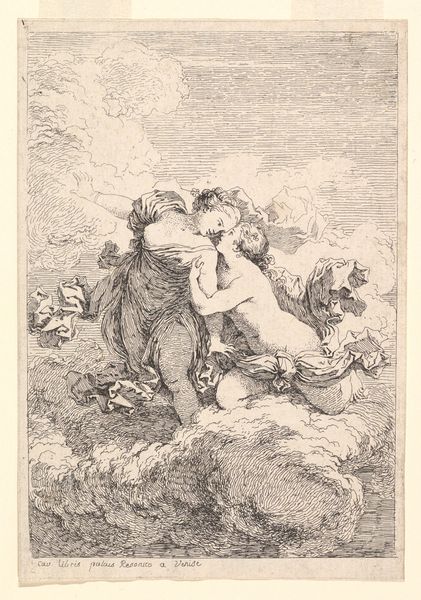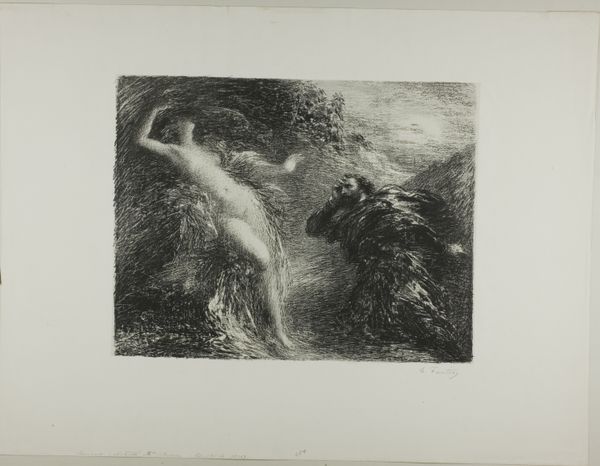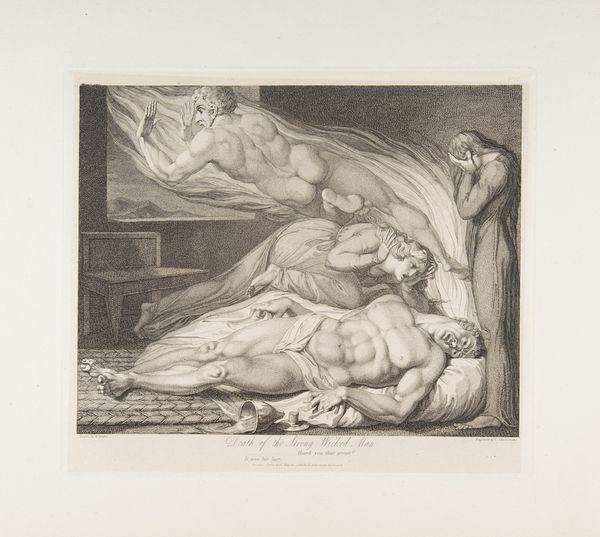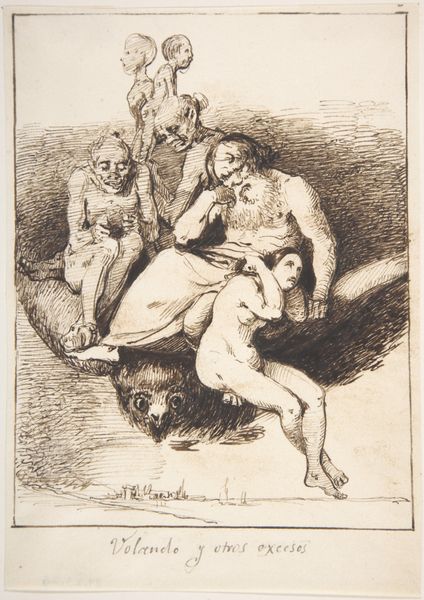
The Temptation of St. Anthony, from the third album of L'Estampe originale 1893
0:00
0:00
drawing, lithograph, print, etching, paper, charcoal
#
drawing
#
lithograph
# print
#
etching
#
charcoal drawing
#
paper
#
symbolism
#
charcoal
#
history-painting
#
nude
Dimensions: 328 × 408 mm (image); 431 × 600 mm (sheet)
Copyright: Public Domain
Curator: Henri Fantin-Latour created this lithograph titled "The Temptation of St. Anthony" in 1893, part of the third album of L'Estampe originale. Editor: The scene is cloaked in such deep chiaroscuro. My first impression is a stark confrontation between earthly indulgence and spiritual devotion rendered with almost gothic unease. Curator: That contrast is really central. The symbolism is heavy, isn't it? Anthony, hunched over his book, attempts to resist the beckoning allure of the idealized nudes. We see this motif echoed time and time again—asceticism battling hedonism, played out against a backdrop of swirling, almost chaotic shadows. Editor: And it resonates still, doesn't it? I immediately think about the male gaze at play. These women are not merely figures of beauty; they embody a socially constructed idea of temptation that Saint Anthony, and perhaps even Fantin-Latour, are wrestling with. The artwork perpetuates a visual tradition where female sexuality is both alluring and dangerous. Curator: The use of charcoal and lithographic techniques definitely emphasizes this conflict, I think. Fantin-Latour creates such gradations of tone—from the light illuminating the women's skin to the heavy, enveloping darkness that seems to weigh down Anthony's spirit. Light and dark symbolize this constant push and pull between sacred and profane, much like in the art of the past. Editor: Right, and perhaps we can go even deeper. Who decided what constitutes sacred and profane? Where are the power structures at play? Even Saint Anthony becomes a complex figure. His resistance isn't just about personal purity; it is implicated in an ideology of repression that casts women as tempters and men as perpetually struggling with desire. Curator: Looking at it through this lens it is almost impossible to look at the painting and not interpret it as the symbol of a patriarchal system of power. Editor: Absolutely. Thinking about Fantin-Latour within the fin-de-siècle milieu, his anxieties are reflective of broader anxieties surrounding the shifting roles of women in society at that moment. It is quite visible in his personal twist on this recurrent scene throughout art history. Curator: Fantin-Latour created a powerful, enduring visual icon, not of a simple moral dilemma, but one layered with complexities. It is clear that temptation is a many headed beast. Editor: And in many ways still very gendered in its representations and lived realities. It pushes us to investigate which stories art perpetuates.
Comments
No comments
Be the first to comment and join the conversation on the ultimate creative platform.
